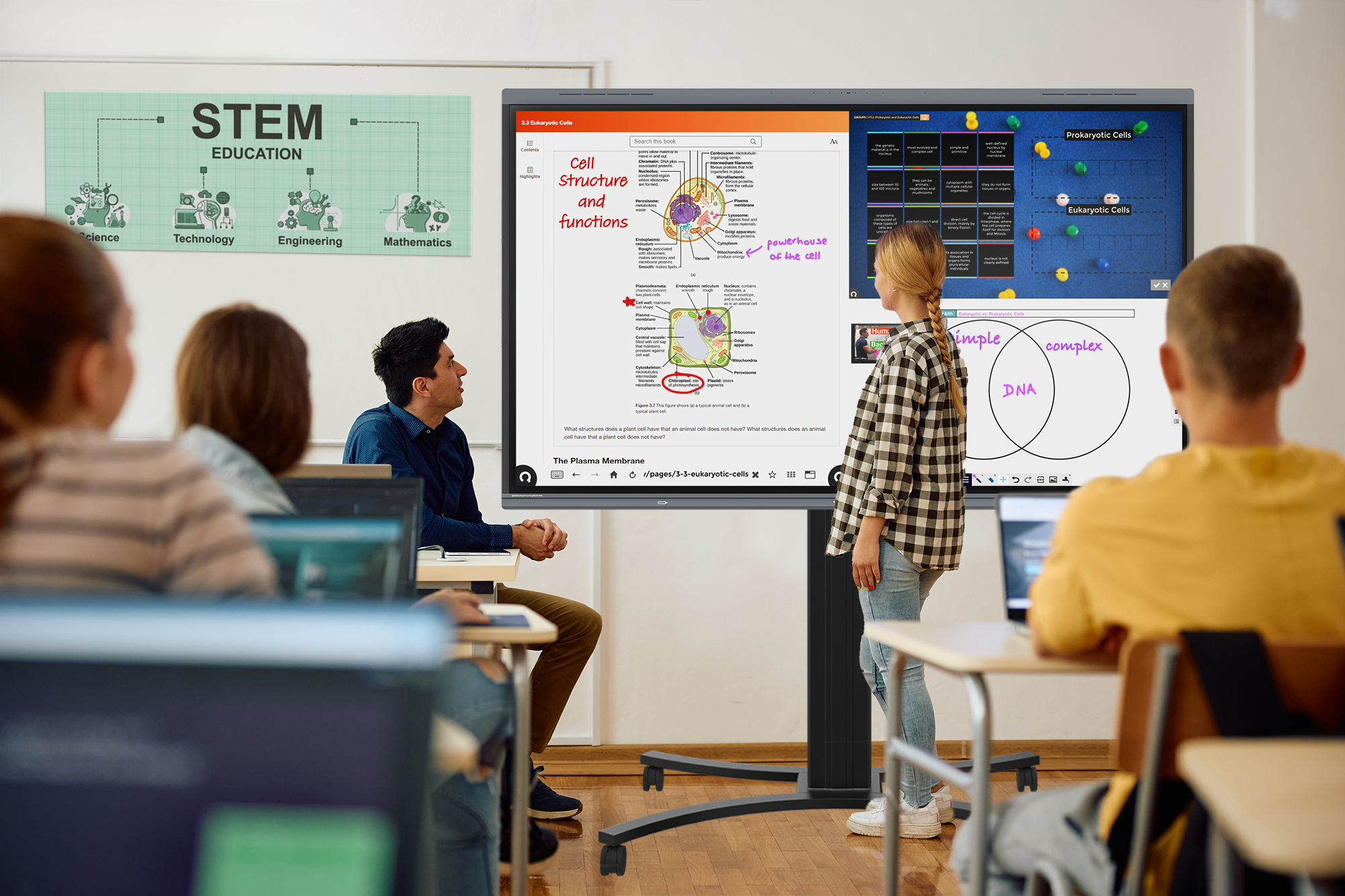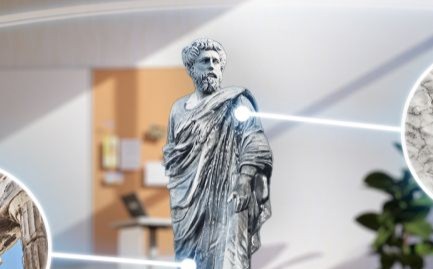Blended Learning: The Solution.
Stating that these past few months for schools was tough would be an understatement. The sudden closure of schools amid the COVID-19 pandemic became unprecedented territory for all educators, parents, and students. It left everyone scrambling to come up with creative ways to keep students engaged and provide a sense of normalcy. For some, this was a smooth transition. Those that were already familiar and comfortable with technology, had previously embraced and welcomed the idea of using online tools to support their traditional face-to-face instruction, were better prepared and ready to tackle this beast know as "Distance Learning". Unfortunately, this transition and change to this "cloud-based" work of online learning was a struggle for many.
The sudden closure of schools made this shift to online learning a necessity, not a pedagogical convenience. Instead of embracing online learning models for their efficiency and effectiveness, many were forced to adapt rather quickly out of a need for survival. Educators not familiar were stuck. It cased a rush to learn as quickly as possible their institutions’ learning management systems (LMS), struggling to communicate with their students and parents, and figuring out ways to make their packets and worksheets digital. This left administrators and instructional tech coaches struggling to put together support documents and scheduled training's and professional development sessions, ironically, online. The majority experienced something filled with anxiety and stress.
Understanding that current conditions, social distancing guidelines, the potential for schools to again close their doors, the move to Blended Learning is a must.
What is Blended Learning?
Before we go any further, I want to elaborate and put a definition to what Blended Learning is. Definitions vary among educational leaders and institutions making it difficult to provide an exact definition. One thing that is common in these definitions, and will serve the purpose of the broad definition we use moving forward, is that Blended Learning is the combination of both in-person face-to-face instruction with moments of online learning. In simpler terms, Blended Learning is a combination of the physical classroom and online learning.
In education and prior to the COVID-19 pandemic, for many, blended learning just happened. When schools moved to 1-to-1 programs teachers utilized blended learning techniques to maximize those initiatives - many without even knowing they were teaching in a blended learning environment. Those that embraced the flipped classroom, held discussions online outside of class time, or allowed students to turn in work digitally and through LMS platforms, began to see the value in a blended learning instruction. Given that now many students have their own device they complete their work at their own pace (mastery with self-paced instruction), they can access class materials whenever they need to. Essentially this was creating an environment where students technically could learn more effectively outside of the classroom. This ability to have materials be accessible 24/7, online discussions with fellow classmates, and ability to complete assignments and tasks online allows educators to reach and teach students more effectively. No one could have predicted the closure of schools for months, but those teaching in a blended learning environment were ready.
Moving Forward
Districts must prepare for a future that embraces Blended Learning. Its no longer an innovative approach to teaching but rather a necessity when considering the current state of education. The ability to integrate face-to-face instruction with resources, moments of collaboration, via an online platform provides numerous benefits to any student in any learning environment. With the current state of education in flux, focusing on developing better distance learning programs becomes that much more imperative. Not knowing how long schools will remain open, you can ensure that through an effect Blended Learning program the learning can continue and a school’s doors can remain “open”. Listed below are tips, processes, and new techniques that one can implement to create a better blended learning environment.
- More than just a class website. Effective Blended Learning requires the use of an LMS - programs like Schoology, Canvas, Google Classroom. These programs allow educators to post all course resources, assessments, assignments, discussions, etc. For younger grades (early elementary) look to programs like Seesaw.
- Use engaging digital content to replace long lecture videos. Simply posting a recorded video of an educator reviewing slides does not create better learning environments. Direct instruction can happen, but moments of collaboration and creation still need to happen. Keep moments of instruction short, with engaging videos or recordings. If you haven’t check out Crash Course YouTube Channel.
- Embrace the self-paced model. Organizing course content and assessments in unit folders allows student to progress through units at their own pace. Rather than the whole course - which many students are not ready for. The concept is that everyone stays within the same unit but can progress through those units documents at different rates.
- Set up for mastery learning. Using features in the LMS you can set formative assessments to be retaken allowing students to make multiple attempts on assessments for better grades. Students can go back and complete activities for better grades. Students are rewarded for the work they do and the effort they show. LMS also allow for better communication and revisions. Educators can quickly assess and suggest revisions to students who can, in turn, make edits and turn back in assignments for higher grades. Again, students’ efforts are rewarded.
- Option to provide student choice. Organizing course work by units educators can display different types of learning activities in a unit folder. Instructing students to complete a certain number out of the total number of assignments. (Ex. choose any 6 of the following). Students will pick assignments they find more interesting and ones that speak to their interests or skills. Also, If some students fly through the unit they can complete engaging open-ended tasks located at the end of units or redo any assignments as mentioned in the mastery comment.
- Be consistent with procedures and information. The look and feel of your course online is important. Many refer to this as the UI/UX experience. Is it easy for a student to navigate your resources online? The more consistent you are with the location of materials, colors of folders, labeling systems, etc. Organize content (I suggest by unit) the same. The same procedures for turning in assignments (and returning assignments) should also be consistent.
- Integrate Web 2.0 tools when appropriate to create more engaging moments of learning. Tools like pHet Simulations or Explore Learning Gizmos bring more “digital hands-on” learning experiences. Creation tools such as Flipgrid, Canva for Education, allow students to express their creativity and create digital products. Bring moments of STEM home through making, tinkering and creating with programs such as sharpen.design
For many, it is an uphill battle. There is absolutely a steep learning curve for many educators. The opportunity we have as educators, is to use this pandemic experience to transform how we teach students. Do students really need to sit still and listen to a 45 min lecture while taking notes, when that same task could be completed online in a more efficient and engaging way. The technological world is ready and has been ready to move to the “cloud”. More jobs will move to remote working environments, tasks will be completed from a distance and collaboration will continue via web conferencing platforms. Schools need to not only use these methods to keep teaching, but they need to embrace these changes to prepare students for a tech-heavy, blended learning, world.
Sources
https://www.edutopia.org/article/blended-learning-built-teacher-expertise
https://www.teachthought.com/learning/the-definition-of-blended-learning/
https://www.teachthought.com/learning/12-types-of-blended-learning/
























